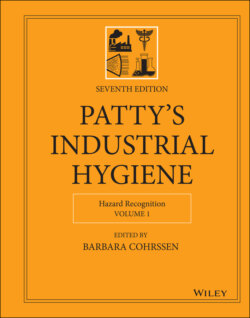Читать книгу Patty's Industrial Hygiene, Hazard Recognition - Группа авторов - Страница 116
4.1 Traffic Light Approach
ОглавлениеThe individualized CB models for chemical agents are commonly known as toolkits and were often developed with the IH profession in mind, however, the derivative structure of these models showed potential for other EHS professions. For many of the toolkits currently available, the art of qualitative risk assessment is quite basic (23). A hazard is defined and considered, the level of risk is stratified to a minimal number of components, and the commensurate controls necessary to reduce each risk level (RL) to an acceptable outcome becomes the output. Determining the number of RLs, which fits the concept of bands or binning, is a result of balancing the intricacy or complexity of the hazard with the needs of the worker. Throughout this process, keeping in mind that the worker is the end‐user of the method is often the most difficult thing to remember.
Theoretically, for the worker, there is a functional understanding that there are two RLs relating to their tasks when performing work; one that is unsafe and should not be done (red light) and one that is safe and should be done (green light). In practice, this is not the case, as it is commonly presented as three levels of risk as in the common safety control approach found in the red, yellow, and green lights of automobile traffic signals around the world. However, this approach has been found in practice to have its limitations with the middle, yellow light option leading to inappropriate judgment over a wide range of risk as it can cover a wide range of often frequent, adverse outcomes. The red/stop and green/go signals are an easily understood and objective risk communication that is readily followed by drivers. However, the subjective responses to yellow lights can vary from slowing down, to speeding up, and often involves some aspect of looking around for police before deciding to slow or speed through the intersection. In fact, this checking for “police” before deciding to comply with a safety measure is an excellent analogy to workers considering the potential presence of EHS professionals in the workplace within their decision to use establish risk reduction controls.
